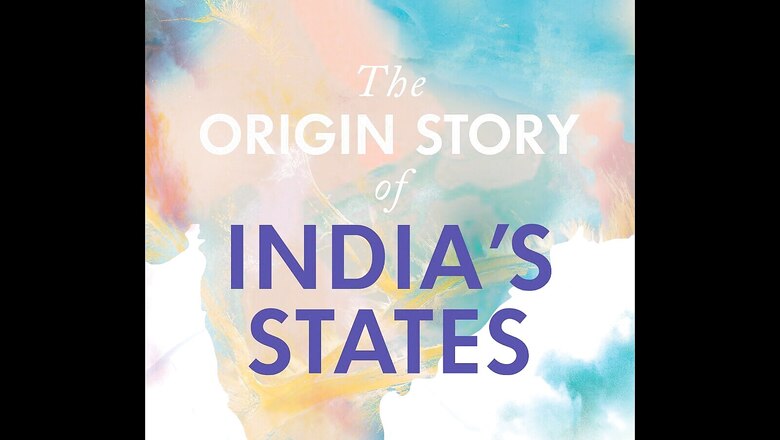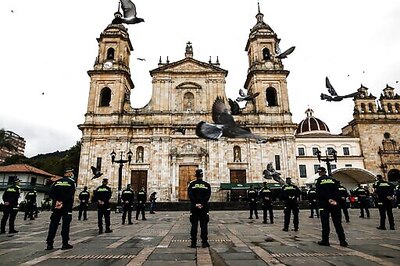
views
‘At the stroke of the midnight hour, when the world sleeps, India will awake to life and freedom.’
Except Goa.
In 1947, when India achieved independence from the British, Goa was under the occupation of a different colonial power. The Portuguese had a few holdings strung out along the west coast of India—Goa (the largest), Dadra, Nagar Haveli, Daman and Diu. And so, at the stroke of the midnight hour on 15 August 1947, these five territories simply continued to be a part of Portuguese India and did not become a part of the Union of India.
Portugal viewed Goa as the ‘Rome of the Orient’—implying a timeless, eternal rule—but Indian nationalists viewed Portuguese India as a ‘pimple’—a temporary nuisance. Neither the local Goans nor the Government of India were all right with Portugal continuing this arrangement. Even before Independence, in June 1946, Dr Ram Manohar Lohia had led a disobedience movement and the Goan Political Conference had passed the ‘Quit Goa’ resolution. In June 1949, both the Goan People’s Party and the president of the Goan National Congress demanded the end to foreign rule and the establishment of democracy. The same month, India established a diplomatic office in Lisbon, the capital of Portugal, and began to negotiate the withdrawal of Portugal from its colonies in India.
Portugal refused to even discuss the issue. In the view of its dictator, António de Oliveira Salazar, these were not ‘colonies’ but parts of metropolitan Portugal. Goa was ‘the expression of Portugal in India’. Goans were citizens of Portugal, represented in the Portuguese legislature and even in the cabinet. Moreover, when Portugal had gained control over these territories in the early 16th century, there was no ‘Republic of India’, just a number of kingdoms. Further, in June 1951, Portugal amended its Constitution to change the status of its overseas colonies—including those in India—to provinces. The question of transferring its territories to India simply did not arise. This didn’t go down well with India. In June 1953, it withdrew its diplomatic mission from Lisbon and instituted visa restrictions between Portuguese colonies and India.
On 21 July 1954, a small party of Indian activists entered the Portuguese territory of Dadra and took over the administration. On 2 August, more activists entered and liberated Nagar Haveli without incident. Inspired by these developments, over a thousand satyagrahis attempted to cross into Goa and Daman on 15 August 1954 but were turned back at the border. A year later, on 15 August 1955, three thousand satyagrahis entered Goa, Daman and Diu in a similar attempt. This time, the Portuguese police and military met them with violence, resulting in deaths and injuries.
Condemning the Portuguese firing, Prime Minister Nehru immediately broke off diplomatic relations with Portugal. India closed its consulate in Goa, curtailed money order facilities, and instituted a travel and economic blockade against Goa, Daman and Diu.
ALSO READ | When Pakistan President Ayub Khan Heeded Chinese Advice on Kashmir & Paid the Price
The issue now became internationalized. The Soviet Union and China backed India’s stand, while Great Britain and other countries of the North Atlantic Treaty Organization (NATO, of which Portugal was a member) alliance supported Portugal. While the United States tried to remain neutral on the matter, it indirectly agreed that Goa was Portugal’s province. This greatly disappointed Nehru. However, this did not bring about any change in the status of Portuguese territories in India.
India tried a last-ditch effort to resolve the matter peacefully. In September 1960, it liberalized travel between Goa and India, and in April 1961, it removed the trade ban with Goa, Daman and Diu. Portugal did not reciprocate on both occasions.
Through the second half of 1961, newly-independent postcolonial nations in Africa started applying greater pressure on India to resolve the Goa issue. At a seminar organized by the Indian Council for Africa in Delhi in October 1961, leaders of multiple African nations linked the immediate liberation of Goa as crucial to the success of ongoing independence movements in Africa. Criticized for having too passive and soft a policy on Goa, Nehru said, ‘We may even decide to send our armies.’ V.K. Krishna Menon, India’s defence minister and the head of India’s UN delegation, declared that India had not renounced ‘the use of force’ in Goa. After fourteen years of attempting to persuade Portugal through patience and nonviolence, armed conflict was now a real prospect for India.
November–December 1961: Military Action
By November 1961, the Portuguese had begun to reinforce their presence in Goa. Four thousand combat soldiers and two artillery units were stationed in Goa, and four frigates (small, fast military ships) patrolled Goa’s coast. They also had over a thousand police officers and border guards as well as five merchant ships and two transport aircraft. Roads leading into Goa were mined.
The trigger came towards the end of November when the Portuguese fired unprovoked at an Indian steamer ship from Anjadip, an island they held just south of Goa. This resulted in injuries and deaths of Indian fishermen. India immediately deployed a destroyer and a frigate to patrol the Karwar coast south of Goa.
On 1 December, India began a surveillance and reconnaissance exercise called Operation Chutney. Two frigates began to patrol the coast of Goa, and the Indian Navy mobilized sixteen ships, divided into four task groups. The Indian Air Force (IAF) began reconnaissance flights to lure any Portuguese fighter jets to reveal their positions. The Indian Army stationed troops around the borders of Goa, Daman and Diu. The army would lead Operation Vijay to liberate Goa, and the navy and the air force would support it.
This excerpt from The Origin Story of India’s States by Venkataraghavan Subha Srinivasan has been published with the permission of Penguin Random House.
Read all the Latest News , Breaking News and IPL 2022 Live Updates here.




















Comments
0 comment